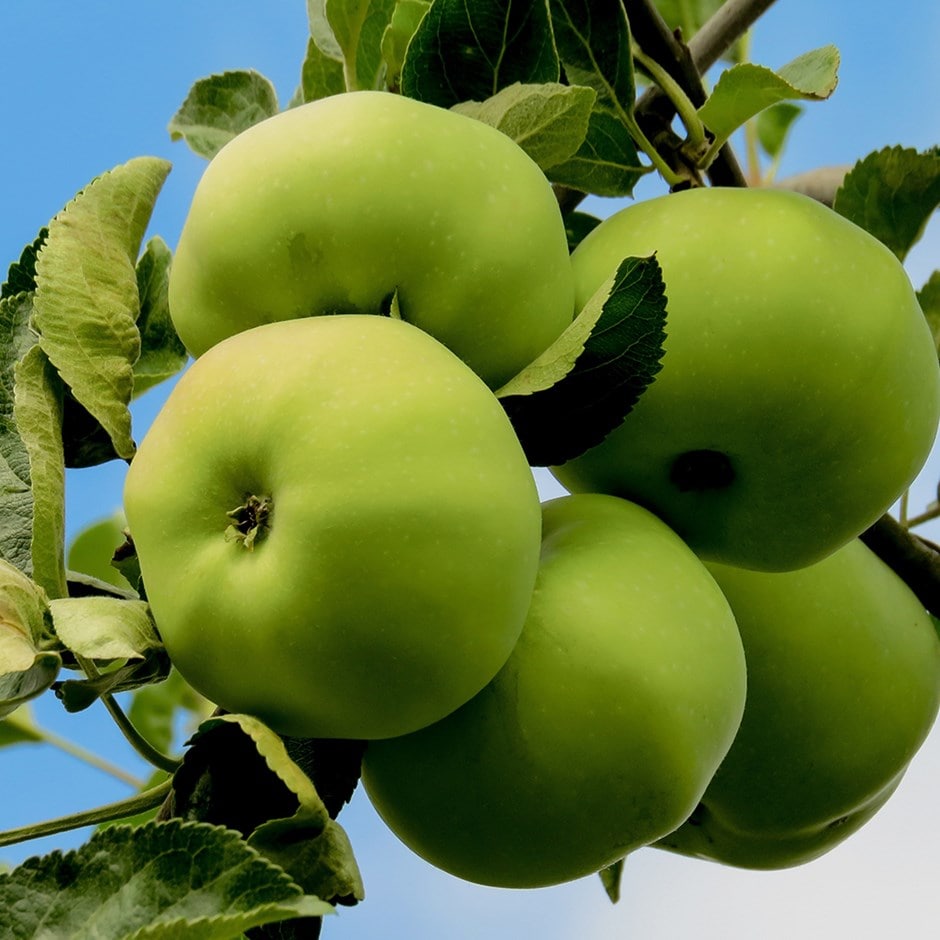apple 'Grenadier'
cooking apple
This tree is deciduous so it will lose all its leaves in autumn, then fresh new foliage appears again each spring.
- Position: full sun
- Soil: moderately fertile, moist, well-drained soil
- Rate of growth: average
- Flowering period: March to April
- Hardiness: fully hardy
In the realm of early cooking apples, 'Grenadier' reigns supreme and ripens by mid-August in the UK. This culinary cultivar is particularly well-suited for northerly, colder, and higher rainfall areas. Its fruits, distinctly ribbed and adorned with a pale green skin, gradually transform into a charming pale yellow-green hue. Bursting with a sharp, zesty flavour, these medium to large apples are perfect for pies, crumbles, and desserts. They also cook down effortlessly into a luscious cream-coloured puree. Less vigorous than 'Bramley's Seedling,' where it can be used as a pollinating partner, it boasts resistance to common apple diseases.
Pollination information: This apple belongs to pollination group 3, and is not self fertile, so does not need a pollinating partner to produce a crop of apples. Cross-pollinate with other apples in this group or those from group or those from groups 2 or 4.
Pollination information: This apple belongs to pollination group 3, and is not self fertile, so does not need a pollinating partner to produce a crop of apples. Cross-pollinate with other apples in this group or those from group or those from groups 2 or 4.
When planting your apple tree, prepare a hole up to three times the diameter of its root system. Fork over the base of the pit in readiness, incorporating plenty of organic matter into the backfill and planting hole. Avoiding frozen and waterlogged soil, trees should be planted out as they arrive. If you've ordered a bare root tree, soak the roots in a bucket of water for half an hour prior to planting - or if this is not possible, they can be heeled in temporarily, covering their roots with soil, or potted up. Once in the ground, stake firmly and keep the base weed-free. Apply a balanced fertiliser in early spring to support growth and fruiting and provide regular watering during hot, dry spells. The main winter prune, avoiding frosty conditions, involves removing dead, dying, and diseased wood to create an open crown. Additionally, reduce leaders and laterals by a third to establish an airy structure without crisscrossing branches. In August, summer prune by shortening side shoots longer than 20cm (8”) back to three leaves, promoting fruit ripening and encouraging more fruit buds.

